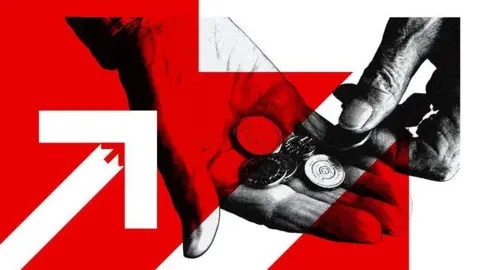## Understanding the Rising Inflation in the UK
### Overview of Recent Inflation Trends
Recent economic reports indicate that inflation in the United Kingdom continues to escalate, with prices rising by **3.6%** in the year up to June 2025. This surge is largely attributed to the increased costs of essential commodities, notably food and fuel. The persistent inflation rate remains significantly above the **Bank of England’s** target of **2%**. In an attempt to manage these inflation levels, the Bank has made strategic adjustments to interest rates, having cut them four times since August 2024, with proactive measures aimed at fostering economic stability.
### Defining Inflation
To clarify what inflation entails, it is the rate at which the general price level of goods and services rises, eroding purchasing power. For instance, if a typical bottle of milk costs **£1** in one year but rises to **£1.05** the following year, this reflects an annual inflation rate of **5%** for that product. Understanding inflation dynamics is crucial for economists and the general public alike, given its implications on personal finance and larger economic policies.
### Measuring Inflation in the UK
The **Office for National Statistics (ONS)** plays a pivotal role in determining and reporting the UK’s inflation rate by tracking the prices of a diverse array of consumer items, including everyday necessities like food and fuel. This dataset is often referred to as the ‘basket of goods.’ The basket is periodically updated to reflect changing consumer habits. For example, with advancements in technology, items like **virtual reality headsets** and **yoga mats** were included in the basket in 2025, while outdated expenditures such as local newspaper ads were removed.
The main measure of inflation is the **Consumer Prices Index (CPI)**, which reported a **3.6%** inflation rate as of June 2025, up slightly from **3.4%** in May. There is also consideration for ‘core inflation,’ which excludes food and energy costs due to their volatility. The core CPI has surged to **3.7%**, illustrating the nuanced layers of inflation that policymakers must navigate.
### The Persistent Price Rise
Although inflation has decreased from a peak of **11.1%** in October 2022—the highest in four decades—the reality is that prices are still climbing, albeit at a slower pace. Inflation saw a jolt in 2022 due to heightened demand for oil and gas post-pandemic. Furthermore, the geopolitical turmoil resulting from **Russia’s invasion of Ukraine** exacerbated energy prices. Even as inflation figures drop, the underlying prices of various essential goods, particularly food, continue to exert upward pressure on overall inflation rates.
For instance, in June 2025, food prices surged by **4.5%**, reflecting increased costs for vital products like chocolate, coffee, and meat. Experts cite rising labor and energy costs as contributing factors to this persistent inflation.
### Interest Rates and Inflation Control
To combat high inflation, the Bank of England has historically raised interest rates, with rates peaking at **5.25%**—a 16-year high. Higher interest rates render borrowing costlier, theoretically curbing consumer spending as individuals may choose to save more. This decrease in demand can lead to lower price increases, although the strategy is a double-edged sword. Increased borrowing costs can inadvertently harm economic growth, particularly leading to more expensive mortgages and reduced business investments.
In a recent update, the Bank has cut rates to **4.25%** after several waves of reductions spanning from late 2024 to mid-2025. Despite the uptick in inflation in June, analysts predict that subsequent meetings—like the next one on **August 7, 2025**—may see further rate cuts in a bid to promote economic recovery.
### Wage Growth and Its Relation to Inflation
Wage growth in Great Britain has been encouraging, with figures showing a **5%** increase in regular pay excluding bonuses from March to May 2025. However, after adjusting these wages for inflation, the actual growth stands at around **1.8%**. Notably, public sector wage inflation at **5.5%** has outpaced that of the private sector at **4.9%**, providing a complex backdrop for consumer spending.
### Economic Context in Europe and the US
Inflation issues are not confined to the UK; countries within the **European Union** and the **United States** face similar challenges. The inflation rate in Eurozone countries recorded a modest **1.9%**, signaling a slight recovery from previous months, while the US noted a rise to **2.7%** in June 2025. Central banks in both regions are adjusting their strategies in parallel with the UK to navigate these inflationary pressures, with varying approaches to interest rates.
### Conclusion
In summary, the complexities surrounding rising inflation in the UK involve a multifaceted set of reasons












